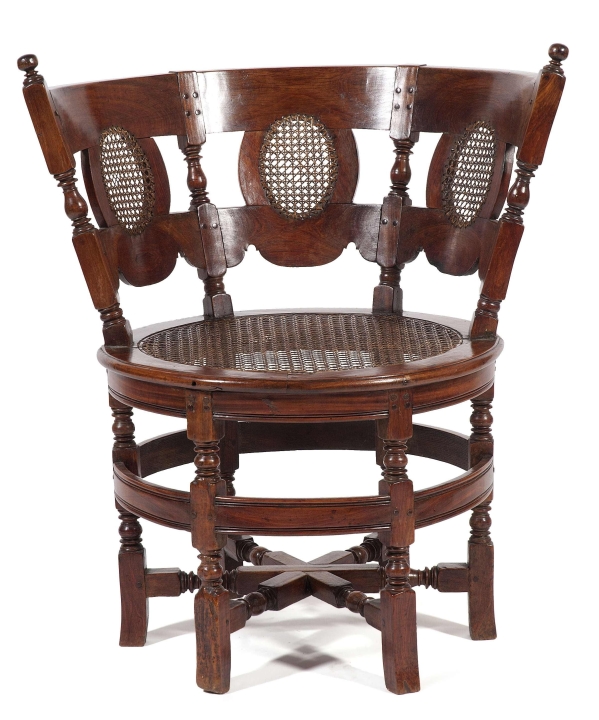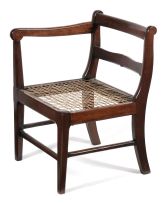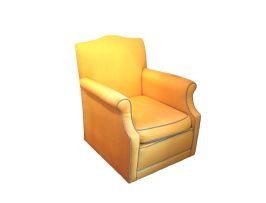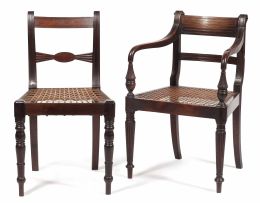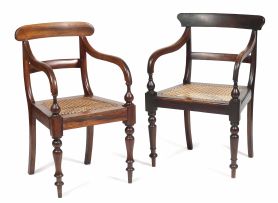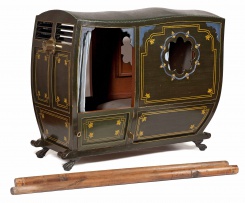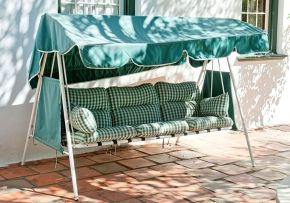The Contents of Keerweder
Live Auction, 22 - 23 October 2012
Session 1
Incl. Buyer's Premium & VAT
About this Item
Notes
Round chairs of this form were manufactured in the Indian sub-continent and the East Indies from the seventeenth century onwards and were extensively copied in the nineteenth century. The exact origin of the round chair is not known. Unlike other seat furniture made for European consumption in the Indies, the round chair has no obvious European prototype. Veenendaal is of the opinion that the round chair with six legs and with little or no decoration, was based on Indian thrones as described in the Manasara, a traditional manual on Hindu architecture. The term 'burgomaster' currently used to describe these chairs is, according to Jaffer, of nineteenth-century origin. In contemporary inventories from the Dutch East Indies and British India, chairs of this design are simply called 'round chairs' and are listed both as single objects as well as in pairs and sets of four and six, indicating that they served no particular hierachic function (Jaffer, 2001, p. 195). Support for this view is found in an illustration of women enjoying tea in a Batavian receptian room, seated on 'burgomaster' chairs in a 1780 illustration by Jan Brandes (Eliens, 2002, plate 30, p.41).
The plain unadorned round chair of the late seventeenth century/early eighteenth century was superceded in the second half of the century by chairs with carved and pierced decoration in rococo taste. Judging from the many examples of round or 'burgomaster' chairs, dating from the third quarter of the eighteenth century, the round chair enjoyed enormous popularity both in Indonesia and in Ceylon. They were also popular with the English in India and, after the Dutch were expelled from Ceylon by the British in 1795, round chairs continued to be made there and in Eastern and Southern India into the nineteenth century.
Guus Roell & Deon Viljoen, Uit verre streken. The European contact with India, Indonesia, China, Japan and the Cape of Good Hope. 17th-20th Centuries. Cape Town and Maastricht, June 2010, no's 11 & 12, where similar examples are discussed
Provenance
Deon Viljoen Fine Art, Newlands, Cape Town
Literature
The William Fehr Collection, Treasures at the Castle of Good Hope, Cape Town, 1973, page 47, plate no 43 where a similar example is illustrated
cf. Deon Viljoen, Monique van de Geijn-Verhoeven and others, Domestic Interiors at the Cape and in Batavia 1602-1795, Waanders Uitgevers, Zwolle/Gemeentemuseum Den Haag, 2002, pages 56 & 57
